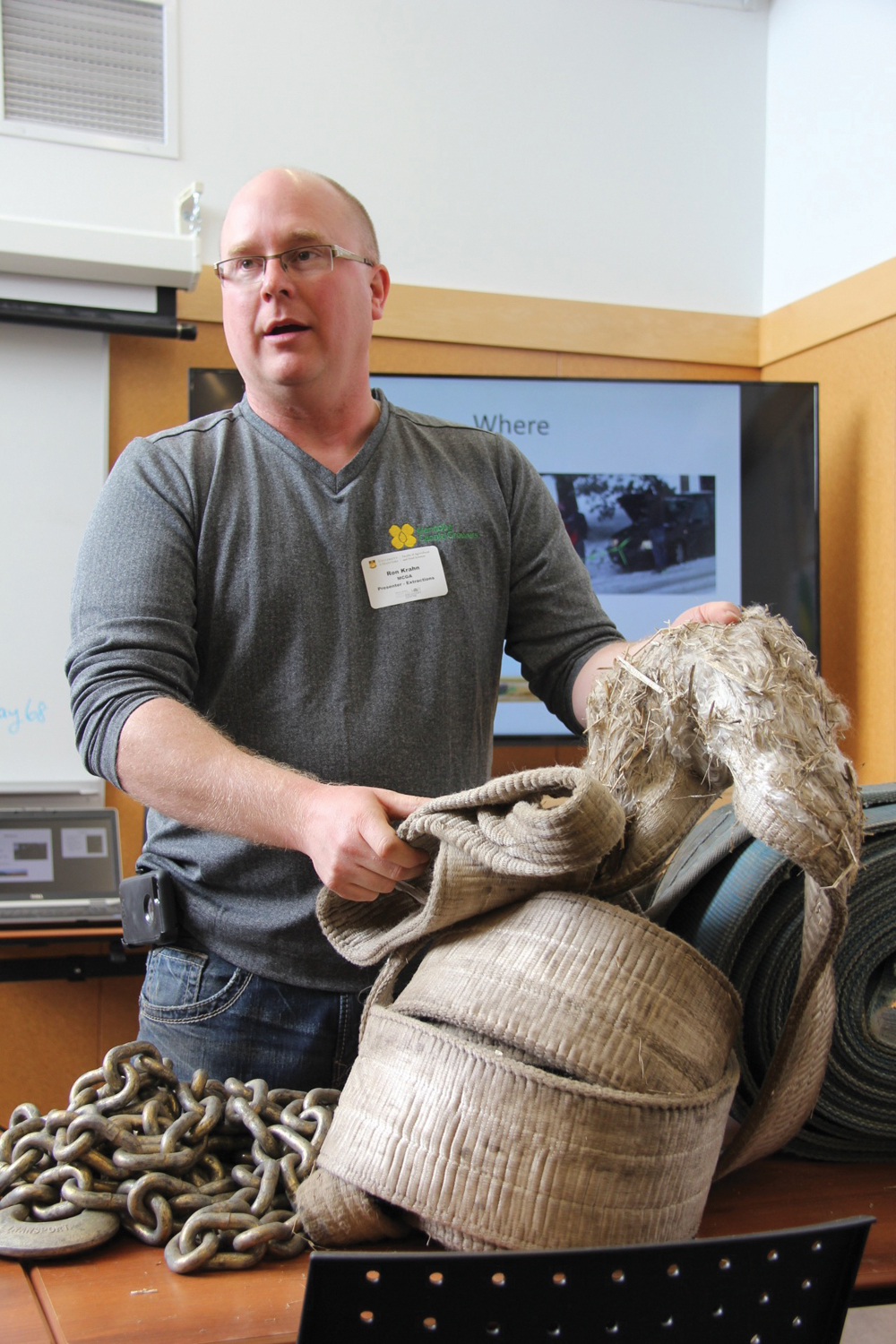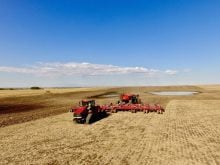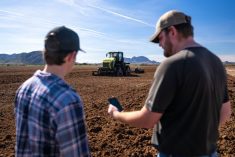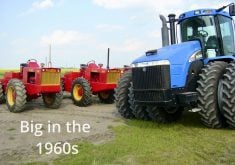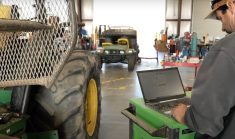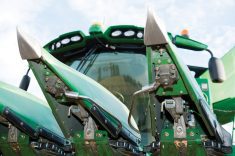If you have a pile of old chains in your workshop ready to use when your tractor or combine gets stuck, just leave them there was the message instructors gave students during a lesson on how to extricate stuck heavy trucks and machines. The January classroom session was part of the University of Manitoba’s first Tractor Safety Day seminar.
“From a safety perspective, a recovery strap is by far your best bet,” said Devin Pouteau, a U. of M. instructor and one of the presenters. “Chains are not recommended for extrications.”
Read Also
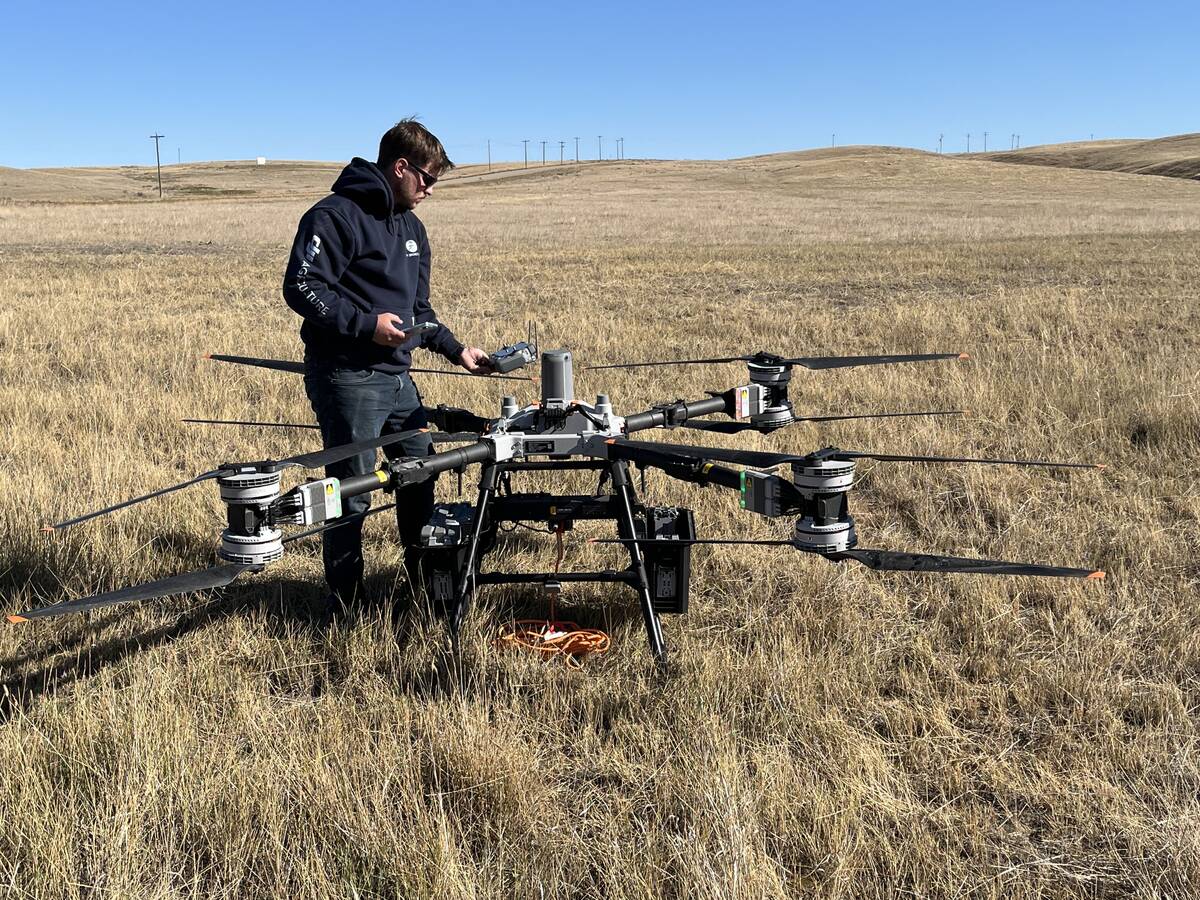
Farm-facing drone does the heavy lifting
Canadian distributor DJI Agriculture unveils its AGRAS T100 drone to western Canada’s producers for greater efficiencies in spraying and granular spreading in fields.
- Read more: U of M holds first tractor safety day
- Read more: U of M hopes to expand machine safety training
Chains are not only more dangerous to use, they are much more expensive to buy when compared to recovery straps. A comparison shown by instructors of a chain and strap with the same load rating provided a good example of that. The strap cost $90, compared to $726 for the chain.
Many farms still have an ample supply of very old chain on hand, which will have an unknown load rating. Sitting on a table at the front of the classroom was an example of a chain found on a farm that wouldn’t be safe for anything, because it had stretched and welded links, making its safe working load unpredictable at best.
Recovery straps also offer other advantages that make them a better tool for the job.
“They’re made out of nylon,” added Pouteau. “It actually stores energy in the strap when it stretches.” That helps add energy during the pull and reduces the risk of damage to machines if there is a sudden jerk — unlike a chain, which has no give in it.
Recovery straps should be used alone, whenever possible. Hooking a chain or heavy steel shackle to the end of it creates a big hazard.
“If that strap ever breaks, you now have 50 or 75 pounds on the end of a very long slingshot,” explained Ron Krahn, another presenter. He noted that sometimes making an effective hook up to a machine with just a recovery strap could be difficult. “But a chain is still your last resort,” he added.
And just like damaged chains, frayed straps should be discarded. Damage to their fibres can compromise them and create a failure hazard. Straps with knots in them should also not be used. Their minimum breaking strength rating should be three times the weight of the machine they are being used to pull.
And bigger isn’t always better. It’s important to match the strap size to the job at hand.
“Sizing a strap is really important,” said Pouteau. “Recovery straps need weight behind them to make them stretch.”
Straps that are too heavy won’t stretch under light loads, and that forfeits their advantage.
Good communication between everyone involved in the extrication process is crucial to get a machine out safely. That means being organized and having people placed in the correct spot to manage the pull. Two-way radios could be a real benefit.
“We actually prefer to have three people,” noted Krahn about operations on his farm.
And whenever possible reducing the load is something producers should consider before trying to extricate a heavy machine. Emptying a loaded grain truck before trying to pull it out can prevent damage and minimize the stress on equipment. A picture of a loaded semi-trailer truck stuck in a field with its front axle pulled off was shown to students to drive home that point.
“Semis are the most difficult (to connect to),” said Krahn. “They really weren’t meant to convey a lot of force through the (front of) the tractor.”
And operators should know when to give up when they get a machine stuck.
“Sitting there and spinning for a long time usually isn’t going to get you anywhere,” said Krahn.
And with the size and weight of today’s machines, operators should first evaluate whether the job of extricating a stuck unit is something they can realistically handle with the equipment they have available on the farm.
“Sometimes it’s beyond the scope of what you can do,” said Krahn. “Are you going to call in professional help?”


